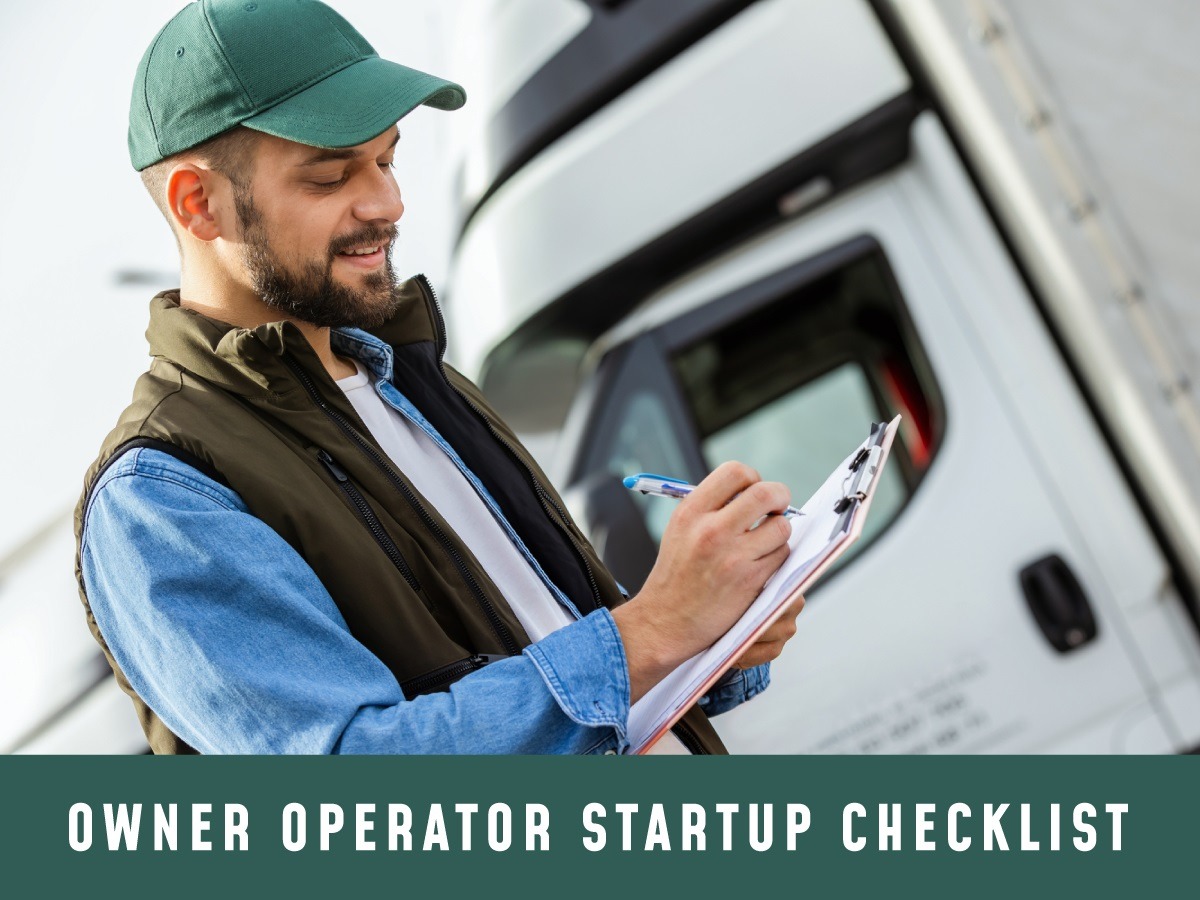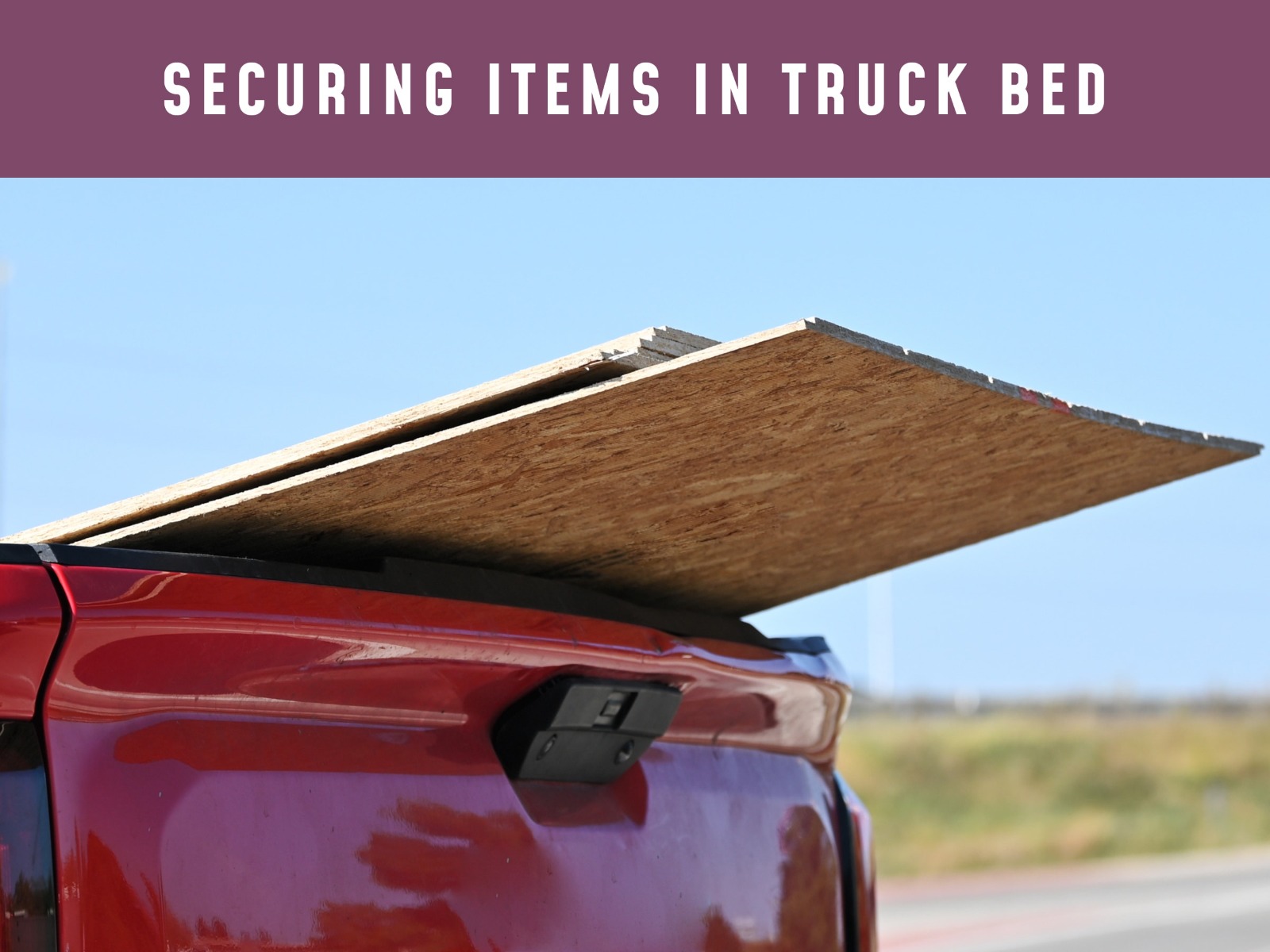Starting a trucking business as an owner-operator requires thorough planning, with a comprehensive startup checklist as your roadmap. This checklist should cover legal compliance, securing permits, licenses, and financing, along with acquiring necessary equipment. Prioritizing safety and compliance is essential for maintaining a reputable operation. Additionally, focusing on effective operational strategies and business development will help differentiate your business and ensure long-term growth and resilience in the competitive trucking industry.
Key Takeaways
- Creating a comprehensive startup checklist is essential for new owner-operators.
- Securing legal compliance and financing is crucial for business stability.
- Effective operational strategies and business development are key to growth.
7 Essential Steps to Get Started as an Owner-Operator
Embarking on your journey as an owner-operator requires careful planning and a solid understanding of the industry. Here’s a step-by-step guide to help you lay a strong foundation for your business:
- Understand the Industry
- Evaluate Personal Qualifications
- Create a Solid Business Plan
- Meet Legal Requirements and Compliance
- Acquire Equipment and Assets
- Manage Finances Effectively
- Implement Operational Strategies
Following these steps will equip you with the knowledge and tools needed to start and sustain a successful owner-operator business.
Getting Started as an Owner-Operator
Starting your journey as an owner-operator requires understanding the industry landscape, assessing personal qualifications, and establishing a comprehensive business plan. Each of these elements is crucial for laying a solid foundation and ensuring you are well-prepared for the challenges ahead.
Understanding the Industry
To succeed as an owner-operator, it's essential to have a thorough grasp of the trucking industry. Familiarize yourself with key trucking industry terms to ensure compliance and operational success:
- Commercial Driver’s License (CDL): A mandatory license for operating commercial vehicles. Obtaining a CDL requires passing both written and road tests specific to the type of vehicle you will be driving.
- USDOT Number: A unique identifier issued by the U.S. Department of Transportation for companies operating commercial vehicles. This number is used in safety reports, audits, and inspections.
- MC Number (Motor Carrier Number): Required for companies that transport regulated commodities across state lines. It signifies the operating authority granted by the Federal Motor Carrier Safety Administration (FMCSA).
- BOC-3 Form: This form designates a process agent in each state where you operate, ensuring that legal documents can be served to you.
- IFTA (International Fuel Tax Agreement): A fuel tax agreement among the lower 48 U.S. states and Canadian provinces, simplifying the reporting of fuel use by motor carriers operating in multiple jurisdictions.
- ELD (Electronic Logging Device): A device mandated by the FMCSA to record a driver’s hours of service electronically. It helps ensure compliance with HOS (Hours of Service) regulations.
Research industry standards and regulations to ensure compliance. Knowing the market dynamics, such as demand for freight and fuel prices, is also important. Stay updated on the latest trends, as shifts in economic conditions can affect your revenue and costs. Being aware of competitors and potential business opportunities aids in strategic planning.
Networking with other truck drivers and owner-operators can provide valuable insights and firsthand knowledge.
Evaluating Personal Qualifications
Your personal qualifications play a critical role in becoming an owner-operator. First, you must hold a valid CDL and have sufficient driving experience. Practical experience on the road is invaluable and can make or break your success in the industry.
Assess your physical health to meet the demands of long hauls and unpredictable schedules. Financial preparedness is also key. Start by evaluating your credit score and savings since startup costs for acquiring a truck and other essentials can be significant.
Soft skills, like problem-solving and time management, are equally important as they help in managing business owner responsibilities smoothly.
Creating a Solid Business Plan
A robust business plan is the cornerstone of your venture as an owner-operator. This plan should outline your startup costs, including vehicle purchase, maintenance, insurance, and fuel expenses.
Determine your target market, competitive advantages, and revenue goals. Detail your marketing strategy, focusing on how you will attract and retain clients. Plan your finances meticulously, projecting income against potential expenses to maintain financial stability.
Your business plan should also include contingency plans for unforeseen circumstances. A well-researched and detailed plan will help secure financing and give you a clear roadmap to follow.
Legal Requirements and Compliance
Starting an owner-operator business requires understanding various legal requirements and ensuring compliance. The primary areas to focus on include obtaining the necessary licenses and permits, securing appropriate insurance, and adhering to tax regulations.
Obtaining Licenses and Permits
To operate legally, you need several key documents. A Commercial Driver's License (CDL) is essential for driving commercial vehicles. Additionally, you'll need a USDOT Number from the U.S. Department of Transportation, which identifies your company during audits, inspections, and compliance reviews.
For interstate operations, securing a Motor Carrier (MC) Number is crucial. The BOC-3 Form designates an agent for service of process in each state you operate, ensuring legal proceedings can always reach you.
Insurance and Liability
Insurance protects your business from various risks. At a minimum, you'll need General Liability Insurance to cover accidents, injuries, and property damage. Cargo Insurance is necessary to protect the goods you transport.
Moreover, Physical Damage Insurance covers your vehicle in case of accidents, theft, or natural disasters. Some states require additional forms of insurance, so check local regulations to ensure full compliance.
Tax Regulations and Filings
Understanding tax obligations is vital. You'll need an Employer Identification Number (EIN) for your business operations. The Heavy Highway Vehicle Use Tax applies to vehicles over 55,000 pounds; you must file Form 2290 annually.
If you operate across state lines, obtain an International Fuel Tax Agreement (IFTA) license to streamline fuel tax reporting. Ensure you're familiar with quarterly IFTA tax returns and keep meticulous records of miles driven and fuel purchased.
Acquiring Equipment and Assets
When starting as an owner-operator, acquiring the right equipment and assets is crucial. This includes choosing the right truck, ensuring proper maintenance and repairs, and incorporating technological support for seamless operations.
Choosing the Right Truck
Selecting the right truck is fundamental to your success. Consider factors like whether to lease or purchase. Leasing can minimize initial investment and provide flexibility, while purchasing might require a down payment but offers long-term stability. Assess the truck's mileage, age, and condition carefully.
Look at both new and used options—new trucks come with warranties but higher costs, whereas used trucks are more affordable but may need immediate attention. Regarding fleet management, consider if you plan to expand and the type of trucks you would incorporate.
Maintenance and Repairs
Effective maintenance ensures your truck runs smoothly and reduces unexpected downtime. Routine inspections should include checking the engine, brakes, tires, and other critical components. It's advisable to have a maintenance schedule and stick to it. Ensure you have a budget for unexpected repairs.
Using an app or software for tracking maintenance can be beneficial, as it helps you stay organized and reminds you of upcoming inspections or services. Having a relationship with a reliable mechanic is crucial. This means getting quality work done efficiently, saving both time and money in the long run.
Technological Support for Operations
Incorporating technology enhances operational efficiency. GPS systems, fleet management software, and electronic logging devices (ELDs) are valuable investments. These tools help in route planning, tracking hours of service, and ensuring compliance with regulations like the International Registration Plan.
Fleet management software allows you to monitor vehicle performance and maintenance needs, making your operations more streamlined. Apps for fuel management and load tracking optimize your time and resources, while telematics can provide real-time data on vehicle location and performance. Embracing technology not only improves productivity but also profitability.
To further boost safety and operational efficiency, consider installing backup cameras into your fleet. Backup cameras for fleet vehicles provide an extra layer of security by offering a clear view of surroundings. This can prevent accidents during tight maneuvers and improve driver confidence. Whether you're managing a single vehicle or an entire fleet, these cameras are a smart investment in both safety and productivity, helping to protect your assets and maintain a smooth operation.
Managing Finances
Effectively managing finances is crucial for any owner-operator startup. Key components include budgeting for operational costs and understanding various financing options.
Budgeting for Operational Costs
To maintain profitability, create a detailed budget that includes all operational expenses. Key costs to consider are fuel, maintenance, insurance premiums, and permit fees.
Draft a spreadsheet or use financial software to track and forecast monthly and annual expenses. Set aside funds for unexpected repairs or emergencies.
Calculating the break-even point, where your revenue equals your costs, is essential in guiding your pricing strategy. Use historical data or market averages to estimate fuel and maintenance costs accurately.
Understanding Financing Options
Exploring financing options can provide the capital needed for initial investments and ongoing operations. Familiarize yourself with small business loans, venture capital, and lines of credit.
Small business loans are a common choice and can be secured through banks or online lenders. These typically require a solid business plan and financial projections.
Venture capital may be an option if your startup has high growth potential, though it often requires giving up some equity.
Lines of credit offer flexibility for covering short-term expenses but come with variable interest rates. Evaluate each option’s terms to find the best fit for your financial situation.
Operational Strategies
To successfully operate as an owner-operator, it's crucial to focus on efficient load management, optimize routes and scheduling, and strictly adhere to regulations. Implementing these strategies will enhance your business's efficiency and profitability.
Efficient Load Management
Efficient load management is fundamental to maximizing your profits. Prioritize choosing loads that allow for minimal deadheading (driving without cargo). Tools and software can assist in selecting the most profitable loads.
Coordinate your load planning to reduce time spent waiting. This reduces idle time and maximizes revenue from each trip. Additionally, ensure your vehicle is capable of handling the selected freight, whether it's hazardous materials (hazmat) or oversized loads. Always verify the weight of the cargo to avoid penalties and potential damage to your vehicle.
Routes and Scheduling
Strategically planning your routes can save significant time and money. Use GPS and route optimization tools tailored for trucking to find the most fuel-efficient and time-saving routes. This minimizes time on the road and improves on-time deliveries.
Consider traffic patterns, road conditions, and restrictions on hazardous materials when planning your routes. Optimize your schedules by aligning pickups and deliveries to avoid peak traffic hours, reducing delays and fuel consumption.
Adhere to Hours of Service (HOS) regulations to prevent fatigue and ensure legal compliance. Proper scheduling maximizes driving time while ensuring you meet mandatory rest periods.
Adhering to Regulations
Compliance with regulations is non-negotiable for any owner-operator. Familiarize yourself with the Federal Motor Carrier Safety Administration (FMCSA) guidelines and adhere to Hours of Service (HOS) rules to avoid fines and ensure safety.
Stay up-to-date with state and federal regulations regarding load securement, hazardous materials (hazmat) transportation, and vehicle maintenance requirements. Regularly maintain your vehicle to pass inspections and avoid downtime.
Make use of Electronic Logging Devices (ELDs) to track Hours of Service accurately and ensure compliance with federal requirements. This not only prevents legal issues but also helps streamline operations by providing precise records of your driving hours.
Business Development
Effective business development is crucial for owner-operators. It involves strategic actions like building a client base, setting growth milestones, and considering legal structures for expansion.
Building a Client Base
Establishing a robust client base is foundational for your business. Start by identifying your target market and offering services that meet their needs. Utilize online marketing, social media, and networking events to reach potential clients.
Consider creating a professional website showcasing your services and client testimonials. It's also important to secure your own authority, such as a motor carrier authority number, to build credibility.
Engage with clients through personalized communication and exceptional service. Join industry-related forums and groups to stay updated and network effectively.
Setting Growth Milestones
Growth milestones help track your company’s progress and focus on achievable targets. Start by setting short-term goals, such as acquiring a certain number of clients in the first six months.
Create a detailed growth plan with timelines for each milestone. Monitor your financial metrics closely, including revenue, expenses, and profit margins, to ensure you stay on track.
Regularly assess your market position and be prepared to adjust your strategies based on industry trends and challenges. This proactive approach will keep your growth sustainable.
Legal Structures for Expansion
Choosing the right legal structure can significantly impact your business's growth. An LLC (Limited Liability Company) is often recommended for owner-operators due to its flexibility and protection of personal assets.
Consult with a process agent or legal advisor to understand the requirements and procedures for establishing an LLC. This structure not only provides liability protection but also can enhance your business credibility with clients.
Consider other legal structures like a sole proprietorship or corporation depending on your long-term goals and expansion plans. Ensure you comply with all legal and regulatory requirements in your industry.
Safety and Compliance
Ensuring both safety and compliance involves meeting regulatory standards, implementing strict drug and alcohol policies, and managing hazardous materials carefully. Here are key guidelines to follow.
Meeting Federal Motor Carrier Safety Administration Standards
To comply with the Federal Motor Carrier Safety Administration (FMCSA) standards, you need to adhere to several critical guidelines.
Maintain updated records of driving hours to avoid violations of hours-of-service regulations. Your fleet must undergo routine inspections by certified personnel. Speed limits, weight restrictions, and route planning software will help in navigation and regulatory compliance. The FMCSA also mandates periodic reviews and audits, keeping your safety and compliance efforts in check. Updating your registration and operating authority with the FMCSA is essential for staying compliant.
Drug and Alcohol Policies
Implementing stringent drug and alcohol policies is non-negotiable for operating safely.
Under the U.S. Department of Transportation regulations, you must conduct pre-employment drug tests for drivers. Random tests throughout the year ensure ongoing compliance. Maintain detailed documentation of all testing activities. Enforce strict disciplinary actions for any violations. Ensure that your team knows about the zero-tolerance policy for drugs and alcohol. Implement educational programs that inform drivers about the risks and liabilities of drug and alcohol use. This proactive approach can mitigate risks, ensuring a safer operational environment.
Handling Hazardous Materials
Handling hazardous materials demands meticulous attention to detail and adherence to federal regulations.
Ensure drivers have completed the required hazardous materials training. Vehicles must be equipped with the necessary safety gear and labels indicating the nature of the hazardous materials being transported. Detailed spill response plans should be in place, and every driver must know them. Reporting any incidents immediately is crucial for effective mitigation and compliance. Regular audits and inspections of vehicles and storage facilities will help in identifying any non-compliance issues swiftly. Special permits may be required for transporting certain hazardous materials.
Enhancing Safety and Efficiency with Backup Cameras
As an owner-operator, ensuring driver safety and security of your truck and cargo are paramount. Enhance safety and operational efficiency by integrating commercial backup cameras into your vehicle. These cameras help drivers navigate tight spaces and avoid potential hazards, making them an essential tool for your business. Explore reliable and easy-to-install options here at Camera Source to enhance your safety measures, protect your investments, and maintain a smooth-running operation on the road.









